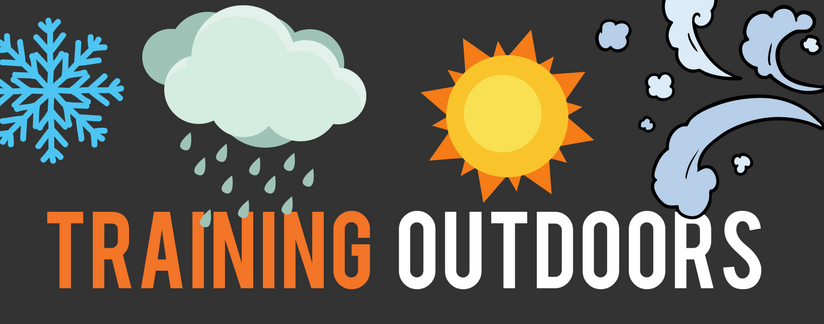GET IN TOUCH TODAY!
"*" indicates required fields

Training outdoors in all weathers has so many benefits.
Once you overcome the initial transition from your comfortable home to battling the elements, you will be really glad you did. So much so that you will eventually find that you can no longer spend a whole day cooped up indoors – you will long for the great outdoors no matter what the weather man or girl predicts for the day.
Just yesterday we took the kids, including a 7 week old baby, for a walk over Devils Dyke. We got covered in mud but we loved it and the rest of the day we felt all the better for it. Personally I believe its what we are designed for. I’m at my happiest when I’m walking, running, or biking outdoors – and I am not alone in that thinking.
In fact we all love nature so much we bring the stuff into our homes, plants, flowers, even trees in December. Numerous studies have found that exposure to nature leads to improvements in ones mood. It’s also the best way to get an adequate does of Vitamin D, needed for healthy bones, teeth and muscles. So it’s natural, healthy and lets not forget eco-friendly, so why let getting wet or cold and blown about by the wind bother you?
Having said that there is nothing wrong with trying to make your outdoor training experience a little more comfortable. During yesterdays walk we were all wearing waterproof walking shoes/boots, and warm waterproof clothing, and our seven week old was wrapped up like an Eskimo!
The following tips will help you prepare for all weather training and make that transition from your comfy arm chair to the alfresco lifestyle less intimidating.
The Norwegians say there is no such thing as bad weather just bad clothing. I agree although I would not have fancied going for a run during the great storm of 1987, no matter what I was wearing! However, we can definitely dress for a little more comfort. In the summer, a t-shirt and shorts will suffice. Sleeveless t-shirts will allow you more of a free range of movement but remember to get some sun block on those shoulders. In the winter, a long sleeved base layer with a t-shirt over the top will be enough to keep your core warm. If it is really cold a hat and gloves will make the world of difference. In the rain you may want a waterproof top but try to get a breathable one or you will just get too hot. Personally, I usually don’t bother with one. The rain is actually a lovely coolant when your sweating your socks off! I would definitely avoid wearing baggy clothes too. If they get wet it can really slow you down and they can become very uncomfortable. I remember teaching an outdoor bootcamp in the rain once wearing cotton tracksuit bottoms. I spent the whole hour pulling them up and trying not to flash my backside at everyone.
If your training is going to consist of road running, and road running only, I would suggest you seek out a pair of running shoes.
Don’t go for the cheapest pair. You do generally get what you pay for with running shoes. There are some good specialist shops that will observe you walking and recommend a pair that matches your jogging/running style. However, you will pay more for the pleasure. If you are looking to spend a little less, then most sports shops sell a range of good shoes. Make sure they are running shoes. Cross training shoes will do the job but running shoes are designed for forward motion with an emphasis on thicker heels and soles to help propel you forward. If you start getting really serious then run coaches recommend that you change them at least every 6 months, worn or incorrect trainers can affect your knees, hips and lower back. That being said I ran the Brighton Marathon in a pair of running shoes that were about 3 years old! Although I am not a serious runner.
If you are running on all surfaces I highly recommend a pair of trail running shoes. The increased grip and support will improve your safety and performance in all weathers. Particularly if you plan on taking part in any obstacle runs such as tough mudder. If you are attending any outdoor bootcamp classes then I would definitely invest in a pair of trail running shoes. Squat thrusts and mountain climbers in the mud are impossible without them.
As I said there is nothing wrong with making yourself more comfortable when training outdoors. The only discomfort you should be feeling is from the exertion of the intensity of your training. So get prepared and get outdoors for a good dose of mood enhancing nature, and essential Vitamin D.